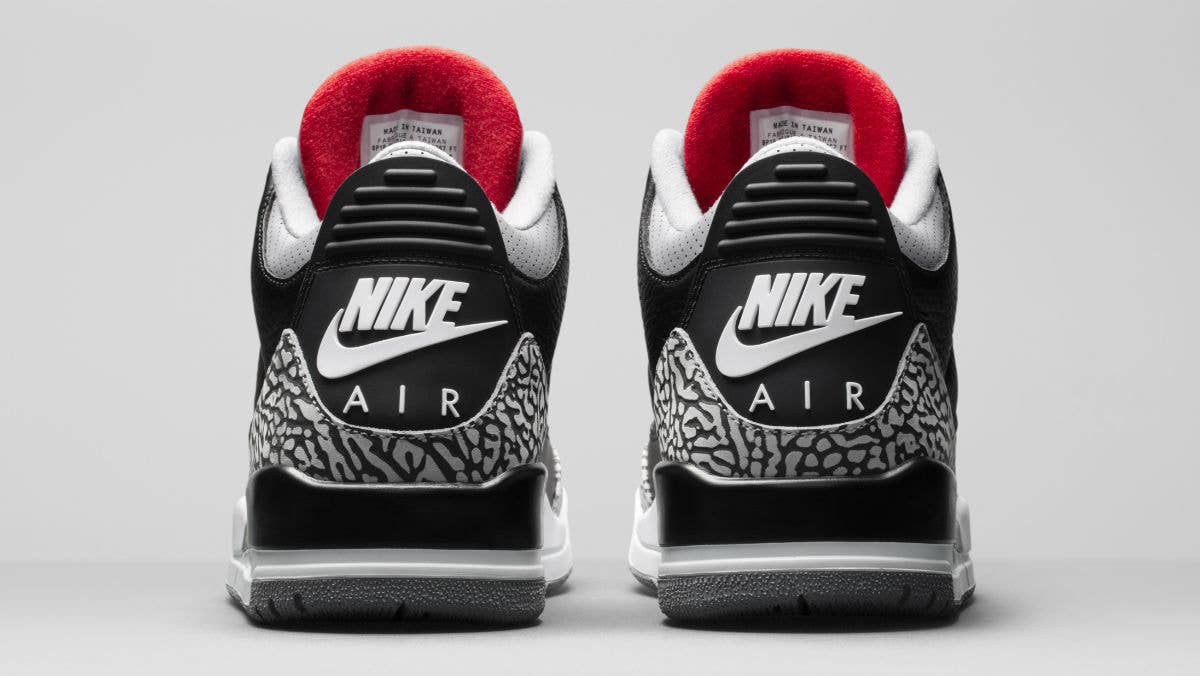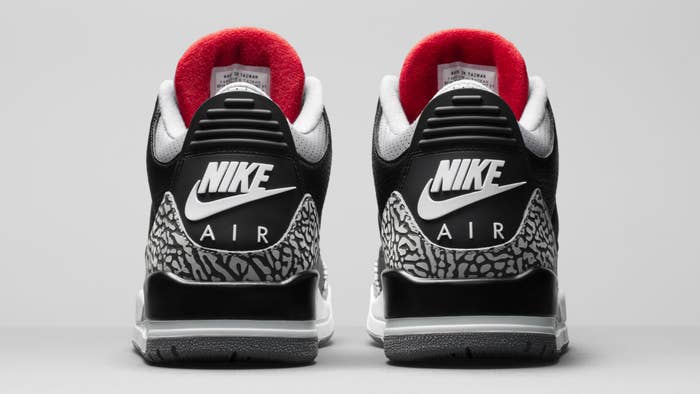
A little more than four years ago, Jordan Brand introduced a new silhouette literally called the Jordan Future. Built on the Air Jordan XI’s sole unit, the Future featured an entirely new woven upper, and would go on to be released in a myriad of colorways and materials. Jordan even turned it into a boot. By the standard of any new sneaker model, it was a success, transcending the initial hype to become a staple. But the shoe didn’t change Jordan’s future as a company much. Retro basketball was still its bread and butter (and Jam, of course). Still is.
This past All-Star Weekend, Jordan Brand retroed the “Black/Cement” Air Jordan III with “Nike Air” branding for the first time since 2001. You may have heard about this. Ever since Jordan announced its retro remastering program back in 2014—just five months after introducing the Future—the “Black/Cement” III has been one of the brand’s most anticipated releases. Its time finally come, the question for Jordan Brand now is simply this: What’s next?
This is a macro question more than a micro one. “What’s next” in the smaller sense is simple enough to forecast—more retros, another flagship Air Jordan model, more attempts at breaking into the running and training market. Which is fine. Or, at least, sustainable. But Jordan Brand isn’t trying to be sustainable, it’s trying to be a juggernaut. Already a multi-billion dollar brand, Jordan was forecast back in 2015 to nearly double its revenues by 2020. It’s becoming increasingly difficult to see how that will happen.
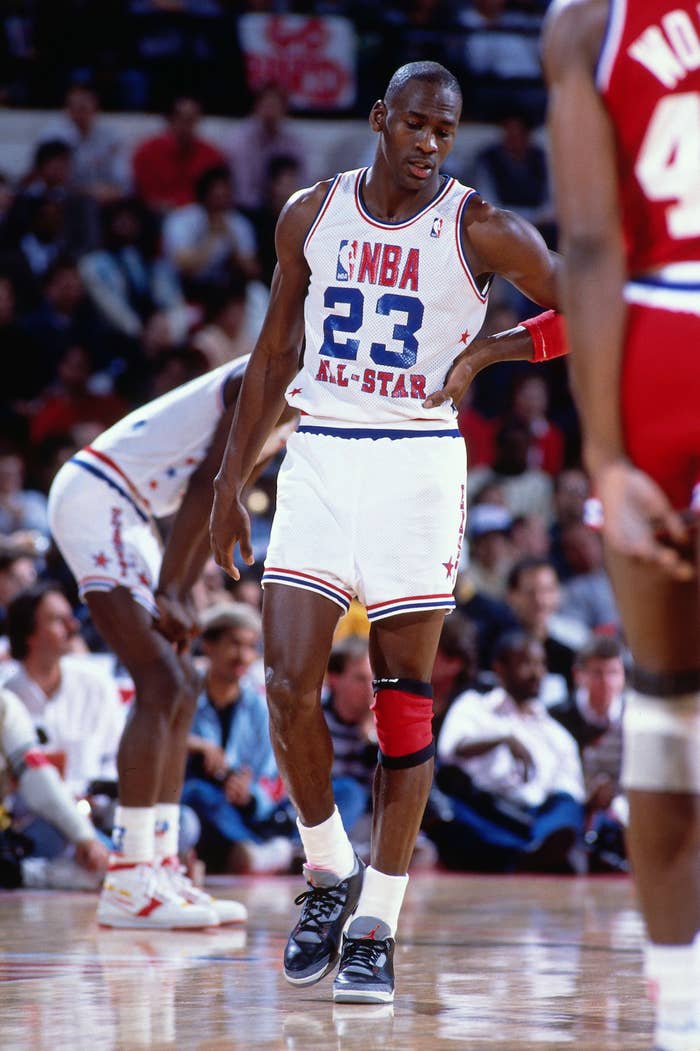
To be honest, that was difficult to see even back in 2015. With the introduction of Boost in 2013, Adidas provided some major energy return to their own company. Using a combination of the springy BASF-developed technology and the halo effect of Kanye West, Adidas catapulted past Jordan to become the second-biggest footwear brand in the U.S. in 2017. With running (and running-esque) shoes surpassing retro hoops shoes in terms of cool, Adidas was primed for this particular takeover. And while Jordan has been trying to make running and training happen for a while, the Jumpman still doesn’t look quite right on anything outside of a basketball silhouette.
So again, what next? Jordan’s already doubled down on retro, having taken the sacred “Nike Air” branding from a super-limited one shot deal with the “White/Cement” “88” IIIs to clearance rack fodder with the likes of the “Maroon” VIs and the “True Blue” IIIs in a span of just three years. The “Black/Cement” IIIs were a huge seller, but after those there’s not a heck of a lot left in the chambers. Sure, a “Black/Cement” IV is a no-brainer, as is a “Nike Air” “Black/Infrared” VI. But neither will have the impact (or the sales numbers) of the “Black/Cement” III. There will no doubt be another Christmas XI to give the end-of-year revenues another bump. But retroing and re-retroing (and re-re-retroing) classics isn’t a long-term answer.
It’s hard to say what will be. Signature shoes, like Russell Westbrook’s Why Not Zero.1? Jordan signature shoes have their own set of problems, ones that I’ve already written about and will likely never be solved—not in any of our lifetimes anyway. They can try and harness the power of celebrity. But they’re going to have to do more than just giving Drake OVO versions of existing models. That doesn’t seem like much in the face of Adidas blessing Pharrell and Kanye West with models (and lines) of their own. (In fact, there are rumors that Drake could actually leave Jordan for Adidas.) And with every passing year, the flagship Air Jordan model becomes less and less relevant to the young consumers Jordan Brand needs to attract in order to remain viable, let alone grow exponentially.
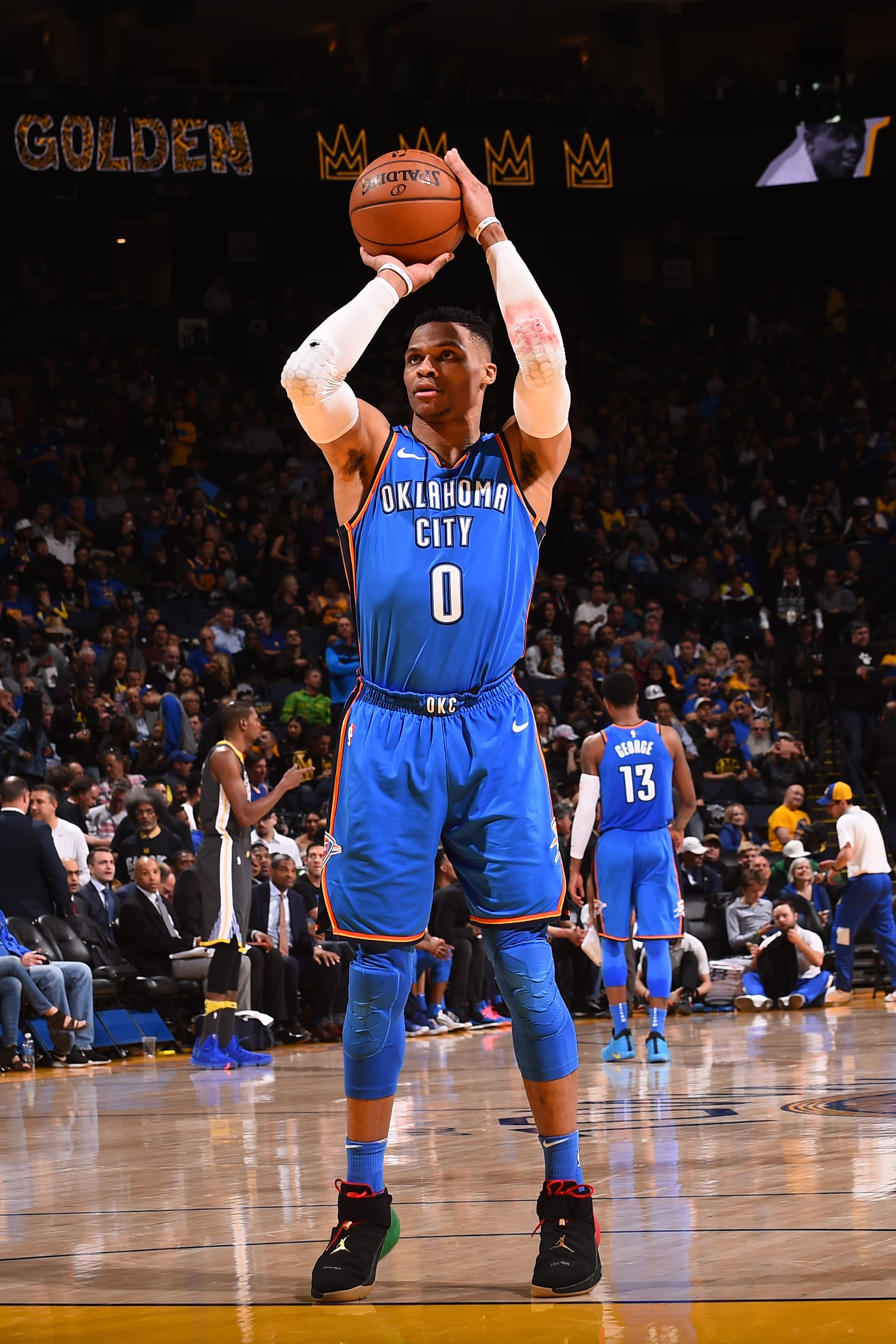
The problems with the flagship shoe go even deeper than that though. For one, the retro-inspired designs of late have tied what is supposed to be the leading edge of their designs to the past. And while Jordan does operate as its own brand, research and development is still done by Nike, in Nike labs. Which means that Nike Basketball gets the fruits of those labors first. Jordan can continue to call each year’s flagship Air Jordan the best basketball shoe on the planet, but that’s a hard one to swallow when Flyknit—which Nike introduced way back in 2012—is being used for the first time on an Air Jordan in 2017.
Even retro, the ace in the hole, seems to grow less important by the day. First, there’s a matter of oversaturation. Not just in retail, but on the secondary market, where even individual models are readily available in several vintages. Would you prefer a “Black/Royal” 1 in 2001, 2013 or 2016, sir? Each and every re-release even of the most popular models contributes to a glut that already exists—one that could get even dicier if all of the people holding deadstock pairs who have been taught to look at sneakers as investments suddenly decide to unload. Jordan is reportedly going to make retros more limited again, which could help, or it could be too little too late.
There’s also the matter of just how important retro shoes are to a consumer who never even saw Jordan play in his prime. The first generation of retro consumers was the easiest to sell to—they were the ones who knew firsthand what the shoes were and what Jordan did in them. They already knew the stories. The second generation, they learned from the first. But as we move to yet another generation of sneaker buyers, they become even further removed from both the original shoes and the man himself. It’s hard to expect kids to watch grainy YouTube highlight reels of Jordan when they can watch the likes of LeBron James and Kevin Durant in HD every night. The brand hit on something this past year with Virgil Abloh’s remix of the Air Jordan 1, but it’s yet to be seen how that can carry over into other models—or whether there’s a halo effect that uplifts all retro.
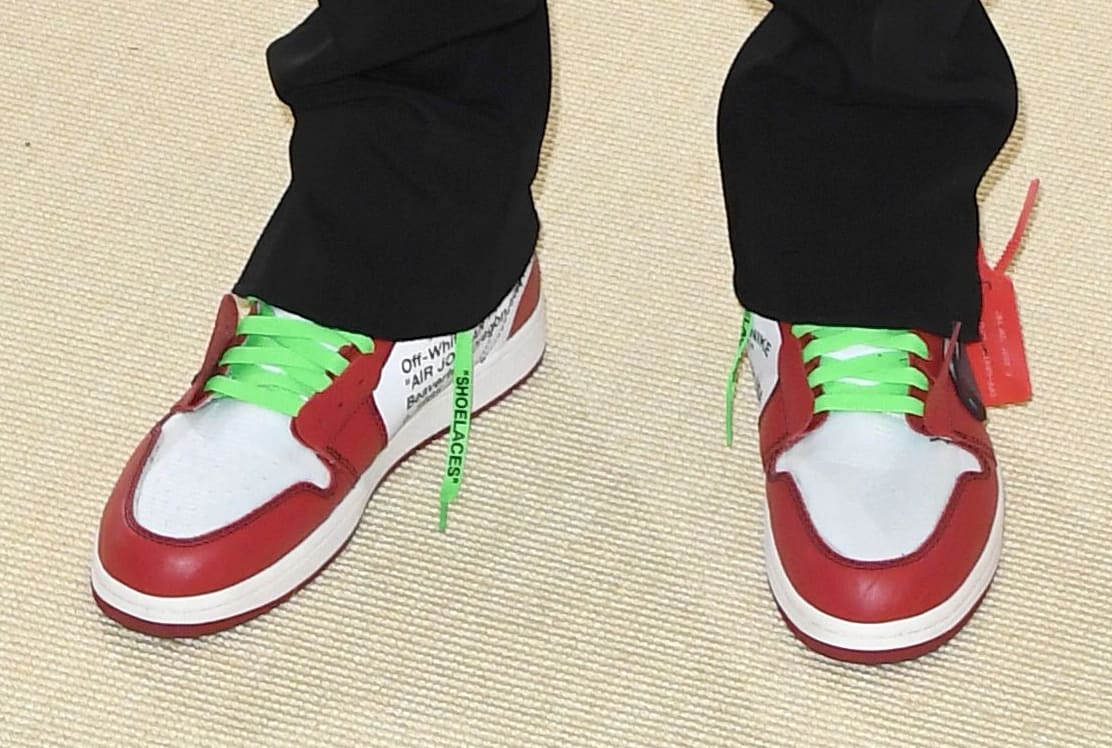
What’s truly frightening is that Jordan Brand executives fully anticipated all of this, yet seem to have few answers. Jordan VP Howard White, who’s been with the brand since Peter Moore first sketched out a ball and wings logo on a napkin, likes to tell a story about Mercedes-Benz, how those being the names of actual people has become secondary to what the brand itself stands for. Karl Benz and Mercedes Jellinek both died in 1929, but the brand lives on. The huge difference, of course, being that Mercedes-Benz was never actually about its namesakes. Jordan isn’t just the name of the brand, he IS the brand.
Fear not, however, the Jordan brand will live on, too. The body of work is too good, the Jumpman too iconic. But in what form? Will it fulfill those 2015 predictions and become a cross-category juggernaut, earning double the profits it made then? Or will it have to embrace a narrower scope and less robust profit margin as a primarily basketball brand?
In order to fulfill the former, the groundwork would have had to have been laid down far earlier. Just imagine if Tinker Hatfield, who revitalized Air Jordan with the III, had been able to release his cross-category Huarache concept with the Jordan Jumpman instead of the Nike Swoosh. Imagine if Jordan had established itself as a brand back in 1991 instead of waiting until 1997, imagine if its history in other categories was as rich as it is in basketball. Instead, Hatfield’s innovative designs went to Nike, as he turned out just one Air Jordan model per year. Jordan’s history is deep, yes, it’s just not broad. And as they’ve found out, establishing themselves in training and running now is easier said than done.
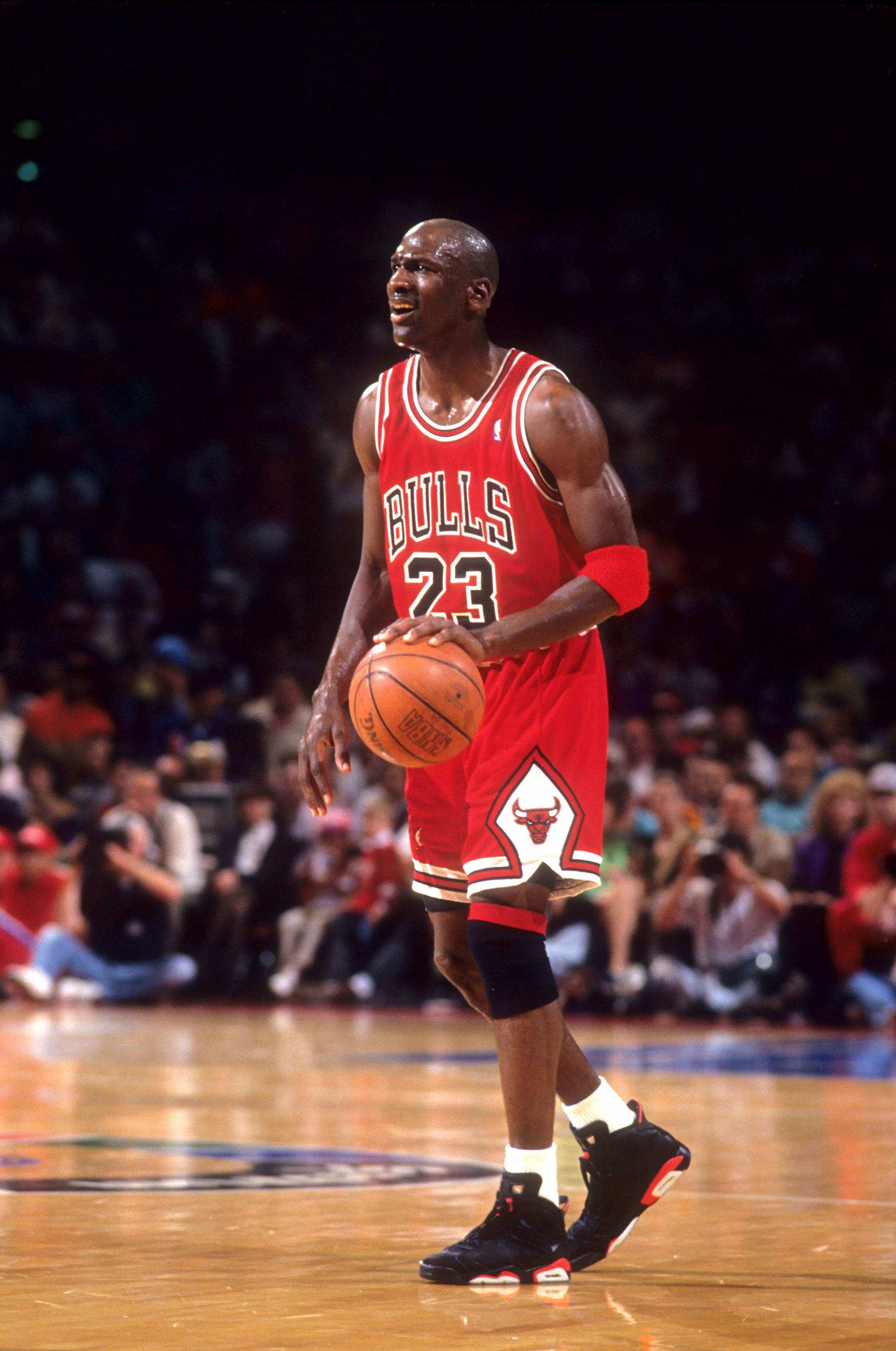
(Aside: There can never be enough said about what Hatfield’s contributions meant to Air Jordan. I tried here, but they should all be repeated, over and over. He is as singular a talent in his field as Jordan is in basketball. Tinker turns 66 in April, and there’s a better chance of finding “the next Jordan” than there is of finding the next Tinker.)
So, to return to the initial question: what next? At some point Jordan Brand will have to decide whether releasing a new flagship Jordan every year is still worth it—especially if it insists on putting its top endorser in a signature model of his own—and how to approach retro in a new way. Maybe it will be as “Protro,” as Nike describes its new Kobe 1, an old design that looks the same but is updated with new technology. Or retro could be tiered, with stitch-for-stitch premium replicas for the obsessives and mass-produced lower quality (and cheaper) versions for those who just want to feel like a part of things. There will likely be more “Tinker Sketch” retros, too, as the brand mines the could-have-been archives. Opening things up for a whole women’s line is a step in the right direction, although simply making the most desirable retros in women’s sizes may be preferable to “shrinking and pinking.”
Jordan Brand is facing challenges, yes, but that’s what its namesake was known for. “I've failed over and over and over again in my life,” Jordan famously proclaimed in a 1998 commercial. “And that is why I succeed.” Two decades on, his eponymous brand may have to learn the same lesson.

